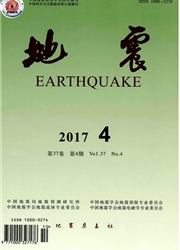

 中文摘要:
中文摘要:
2007—2009年时段GPS数据资料显示青藏高原东北缘地区地壳运动较前期(1999—2007年时段)发生明显变化。本文分别对汶川地震同震影响、震后粘弹性松弛影响和震后余滑影响进行了分析。结果表明,同震对该区域地壳变形特征的形成存在一定影响,而震后粘弹性松弛和余滑产生的影响均可忽略不计。分析认为,对于中国大陆这种多块体系统而言,现有的震后变形机制并不能充分解释震后短期某些区域地壳运动变形特征的形成,汶川地震震后短期青藏高原东北缘的地壳变形特征的形成可能主要与震后块体运动调整有关。
 英文摘要:
英文摘要:
Crust movement changed obviously in the northeastern margin of Tibetan Plateau zone according to GPS measurements during 2007—2009.This paper analyzed the coseimic effect and postseismic viscoelastic relaxation and afterslip effect respectively.The results show that some deformation was formed because of coseismic effect,but the postseismic viscoelastic relaxation and afterslip effect can be neglected.Some characteristics of postseismic short-term deformation can not be explained adequately by the deformation mechanics for China mainland,which belongs to multi-block system.To a large extent,the form of the characteristic of postseismic short-term deformation in the northeastern margin of Tibetan Plateau zone may be related to adjustment movement of blocks.
 同期刊论文项目
同期刊论文项目
 同项目期刊论文
同项目期刊论文
 期刊信息
期刊信息
